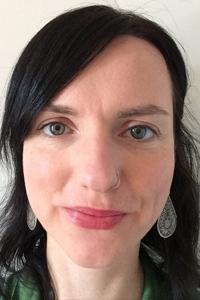
About the author: Maddy has been working as a Spanish->English translator for over 5 years, and is hoping to gain certification in Portuguese soon too. Her interest in Spanish, along with a fascination with Latin America, began many years ago on a high school exchange in Argentina. She specialises in medical translation, with a particular passion for international development, the social sciences, and literary projects.
LAST YEAR, through Facebook, AUSIT posted a reminder to members:
…to take care in not undervaluing the services you provide. There have been several instances recently where extremely low quotes have been given for T & I services. Providing quotes at extremely low rates results in the undervaluing and undermining of the translation and interpreting professions.
The AUSIT Code of Ethics includes, under the heading of “Professional Solidarity”, the following principle:
Interpreters and translators respect and support their fellow professionals, and they uphold the reputation and trustworthiness of the profession of interpreting and translating.
It goes on to explain further:
Practitioners have a loyalty to the profession that extends beyond their individual interest. They support and further the interests of the profession and their colleagues and offer each other assistance.
This loyalty is extremely important, particularly in the context of globalisation and the increased use of machine translation, and I agree wholeheartedly. But it leaves me wondering what constitutes an “extremely low rate”, and I can’t help but feel that this is only the beginning of a big conversation. This post served as a warning, but didn’t offer any assistance on the topic for those who might have needed it.
It is possible that there are some professionals out there deliberately seeking to undercut the rest of us, but it’s perhaps more likely that they’re just not aware they could and should be charging more. The gap between what agencies pay, and what translators can charge of direct clients, is immense.
Could the introduction of a price range rather than one reference value, be a useful tool for the industry here, and help us to reduce under-charging in Australia?
Many agencies and translators invite prospective clients to write to them privately in order to receive a quote, meaning there is often little to no transparency around prices. Perhaps students undertaking university courses on translation and interpreting learn about pay rates, but we don’t all take this route into the profession. For the NAATI translators and interpreters who have come from overseas, and perhaps have not been living in Australia for long, it may be especially difficult to access information about what constitutes appropriate pricing for the Australian market, particularly given it is not a topic we speak about openly. As far as I’m aware, there is nowhere that translators just beginning their career can access information about appropriate rates. The most readily available information online on translation pricing is not specific to Australia or NAATI translations, which obviously represent a unique niche within the global market.
I recently learned about a system used in Brazil which helps to provide some clarity. SINTRA, the SINDICATO NACIONAL DOS TRADUTORES (National Translators’ Union), provides detailed information on reference prices.
For translation, for example, it gives us this, relating to English, Spanish, French and Italian (other languages may attract an additional 30%, or may be subject to different prices). The figures given are the gross amount charged of the final client (not net amounts paid by intermediaries or agencies to the translator or interpreter), and are suggestions, not limits.
| Service | From a foreign language into Portuguese | From Portuguese to a foreign language |
| Non-literary translation | R$ 0.42 per word | R$ 0.53 |
Literary translation |
R$ 40.00 per page* (not including copyright) |
R$ 54.00 per page* (not including copyright) |
R$ = Brazilian reais
* A page is defined as 30 lines x up to 70 characters (including spaces) per line. This equals about 2,100 characters per page, with spaces.
An additional fee of 5-10% can also be charged for administration/coordination. For interpreters, SINTRA even lists different values for each region of this enormous country.
These reference values are reached through consultation with professionals of the different areas, considering the costs of training and professional and technological development, as well as regional variations and inflation rates. SINTRA also includes information on fees for urgent projects, translation revision, conference interpreting, multimedia translation, audio transcription, translation for dubbing, cinema, and television.
I did some further research through social media, and learned more about how it actually works for those in the industry. In practice, it is really only agencies that charge these amounts. Very few translators are able to work at these prices within Brazil, and even then, only after years of practice, specialisation and client prospecting and filtering, and only with direct clients. This same forum shows that Brazilian professionals will still ask their peers for advice on how much to charge for a particular job – SINTRA does not answer all possible questions, but it certainly goes a long way to help.
Could the introduction of something similar, perhaps providing a price range rather than one reference value, be a useful tool for the industry here, and help us to reduce under-charging in Australia?
